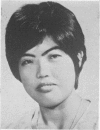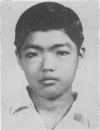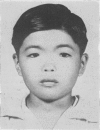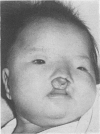Abstract
Nine members in three generations of a Chinese family were found to have Waardenburg's syndrome comprising, mainly, lateral displacement of the inner canthi, broadening of the nasal root and hypertrichosis of the eyebrows. Other minor features were also found.
Two patients had in addition, hypokalemic periodic paralysis of the familial type, one had prominent frontal bossing and another, bilateral cleft lips and palate. These associated anomalies have not been previously documented and the presence of two autosomal dominant genetic defects in this family is of particular interest.
Full text
PDF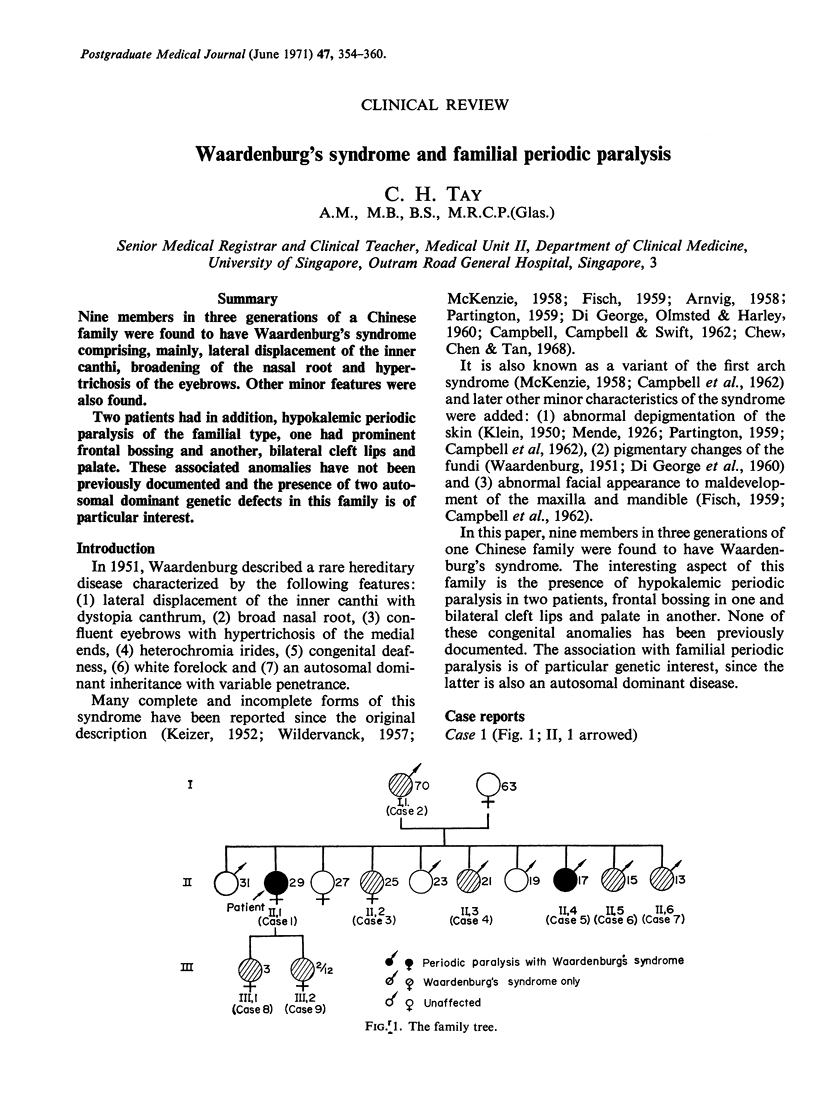
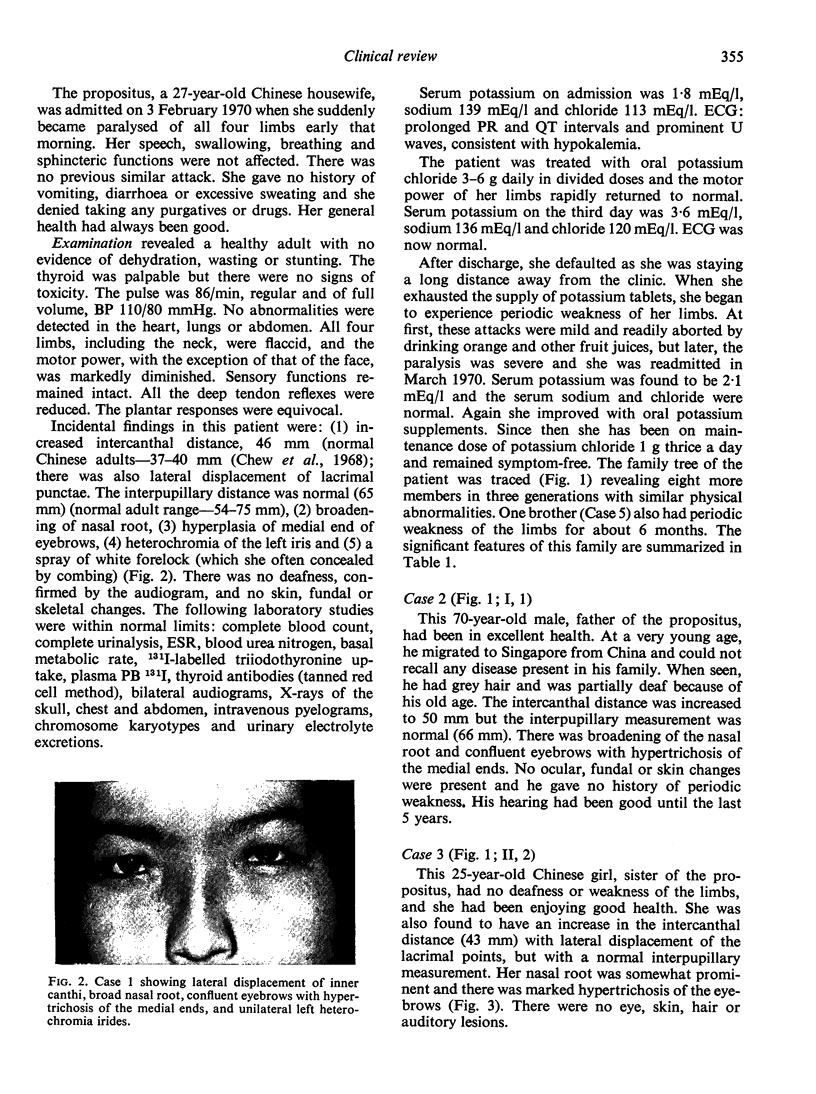
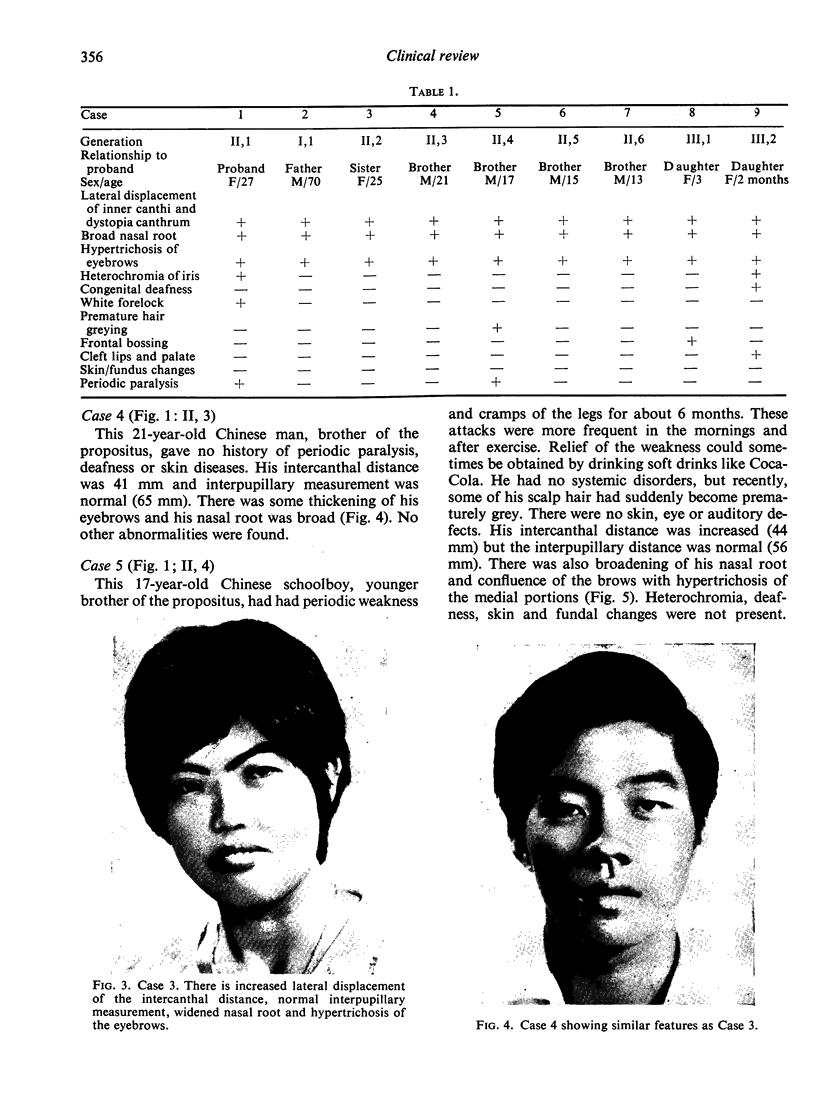
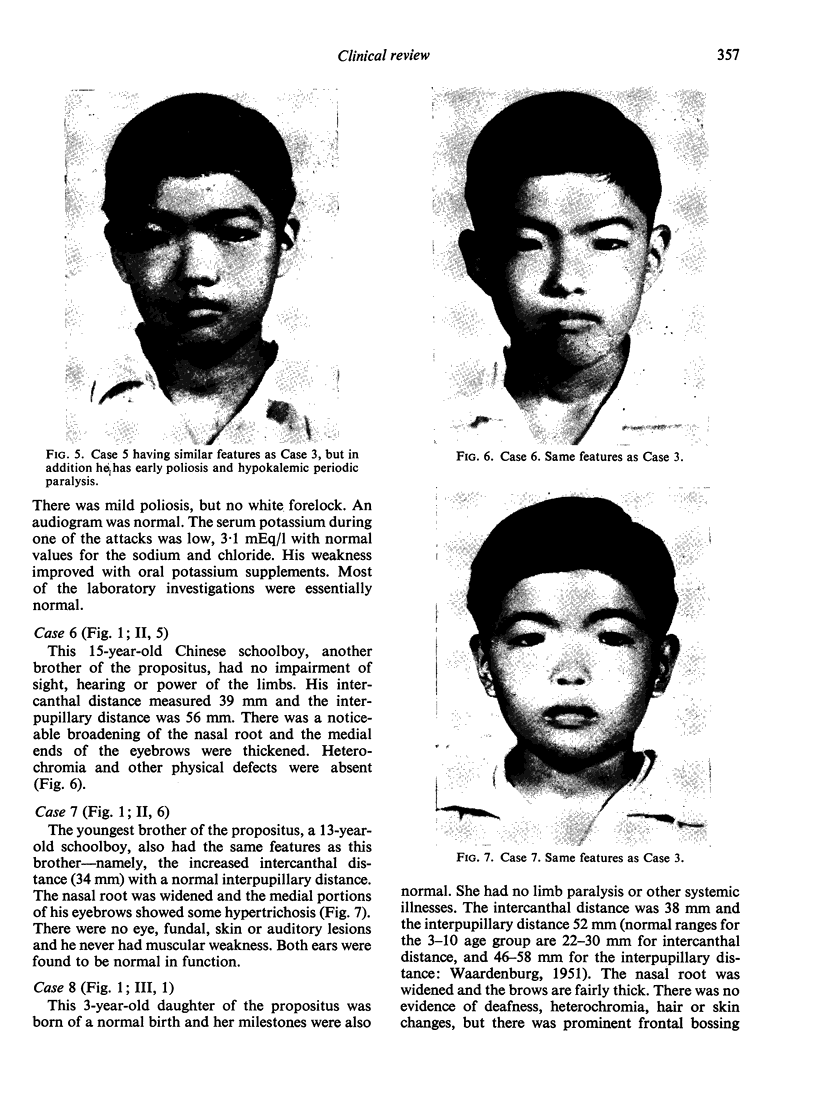
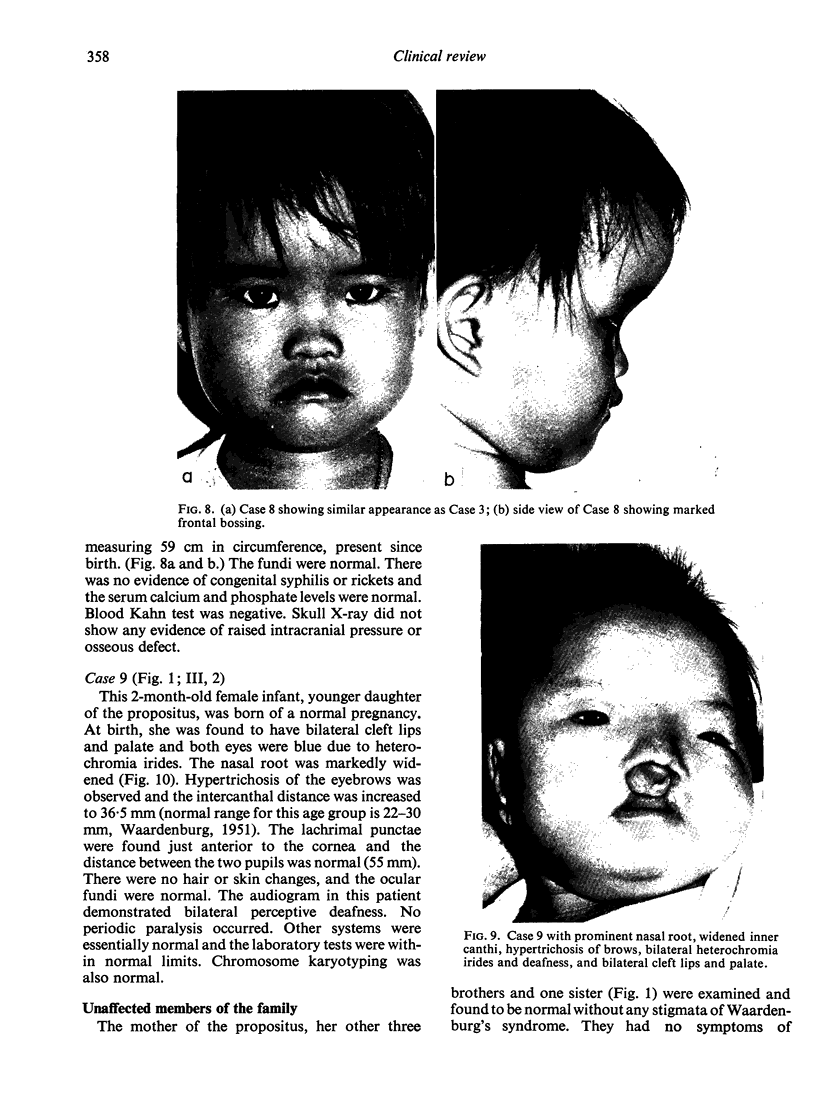
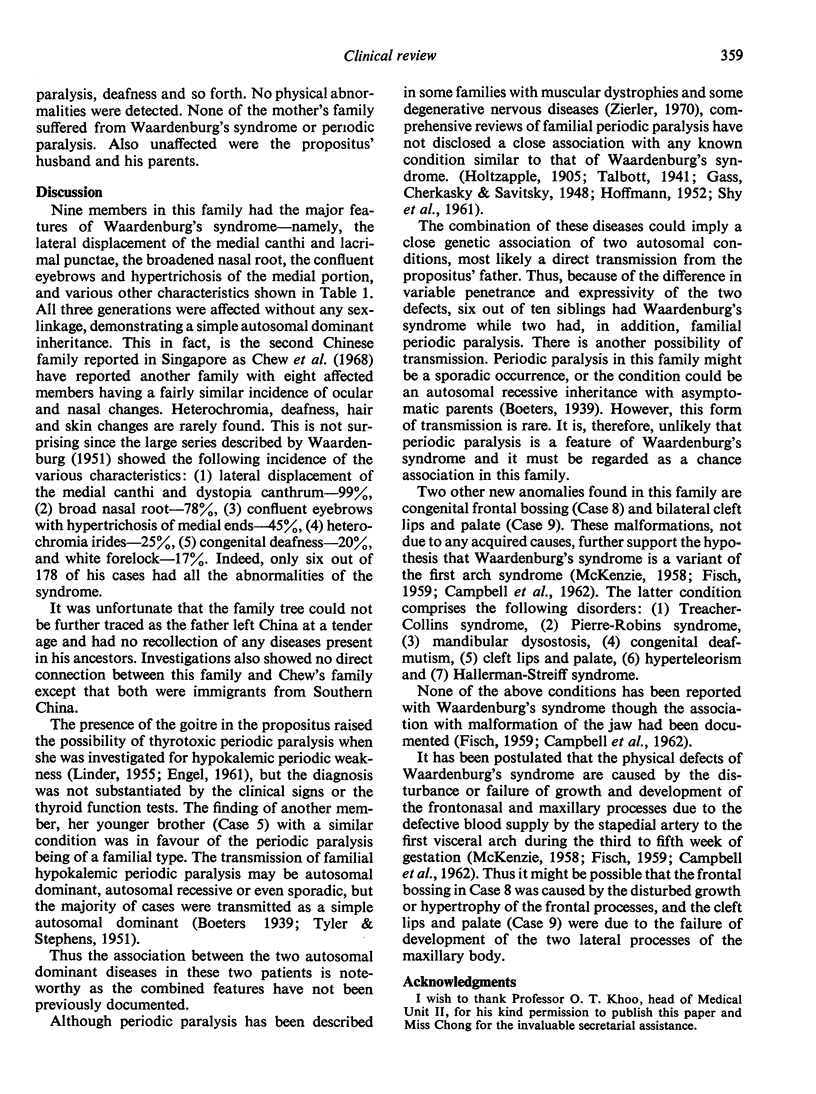
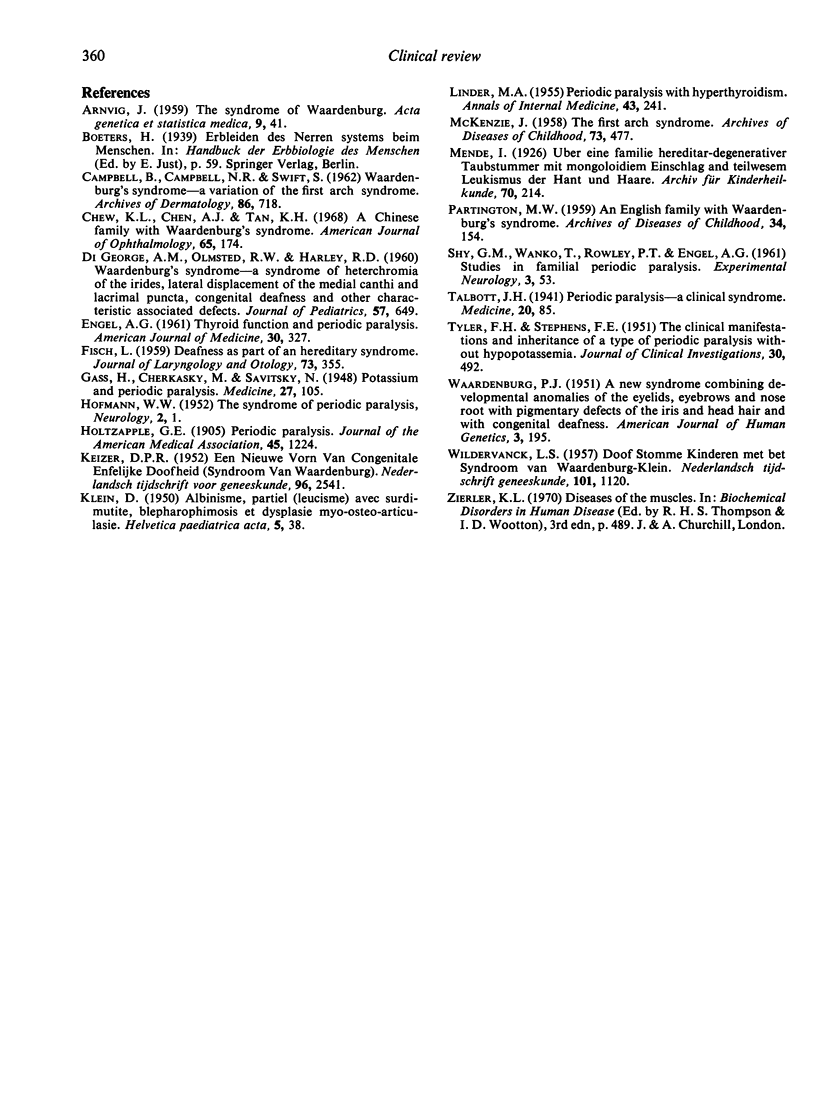
Images in this article
Selected References
These references are in PubMed. This may not be the complete list of references from this article.
- CAMPBELL B., CAMPBELL N. R., SWIFTS Waardenbrug's syndrome. A variation of the first arch syndrome. Arch Dermatol. 1962 Dec;86:718–724. doi: 10.1001/archderm.1962.01590120016003. [DOI] [PubMed] [Google Scholar]
- Chew K. L., Chen A. J., Tan K. H. A Chinese family with Waardenburg's syndrome. Am J Ophthalmol. 1968 Feb;65(2):174–182. [PubMed] [Google Scholar]
- DIGEORGE A. M., OLMSTED R. W., HARLEY R. D. Waardenburg's syndrome. A syndrome of heterochromia of the irides, lateral displacement of the medial canthi and lacrimal puncta, congenital deafness, and other characteristic associated defects. J Pediatr. 1960 Nov;57:649–669. doi: 10.1016/s0022-3476(60)80159-x. [DOI] [PubMed] [Google Scholar]
- ENGEL A. G. Thyroid function and periodic paralysis. Am J Med. 1961 Feb;30:327–333. doi: 10.1016/0002-9343(61)90104-8. [DOI] [PubMed] [Google Scholar]
- FISCH L. Deafness as part of an hereditary syndrome. J Laryngol Otol. 1959 Jun;73:355–382. doi: 10.1017/s0022215100055420. [DOI] [PubMed] [Google Scholar]
- KEIZER D. P. R. Een nieuwe vorm van congenitale erfelijke doofheid (syndroom van Waardenburg). Ned Tijdschr Geneeskd. 1952 Oct 11;96(41):2541–2543. [PubMed] [Google Scholar]
- LINDER M. A. Periodic paralysis associated with hyperthyroidism: report of three cases. Ann Intern Med. 1955 Aug;43(2):241–254. doi: 10.7326/0003-4819-43-2-241. [DOI] [PubMed] [Google Scholar]
- PARTINGTON M. W. An English family with Waardenburg's syndrome. Arch Dis Child. 1959 Apr;34(174):154–157. doi: 10.1136/adc.34.174.154. [DOI] [PMC free article] [PubMed] [Google Scholar]
- TYLER F. H., STEPHENS F. E., GUNN F. D., PERKOFF G. T. Studies in disorders of muscle. VII. Clinical manifestations and inheritance of a type of periodic paralysis without hypopotassemia. J Clin Invest. 1951 May;30(5):492–502. doi: 10.1172/JCI102465. [DOI] [PMC free article] [PubMed] [Google Scholar]
- WAARDENBURG P. J. A new syndrome combining developmental anomalies of the eyelids, eyebrows and nose root with pigmentary defects of the iris and head hair and with congenital deafness. Am J Hum Genet. 1951 Sep;3(3):195–253. [PMC free article] [PubMed] [Google Scholar]




